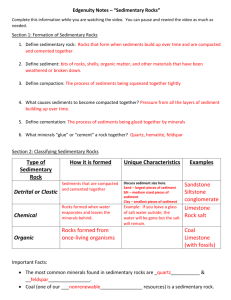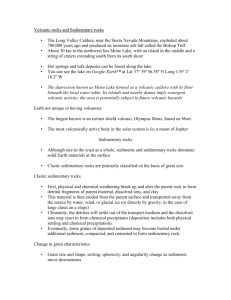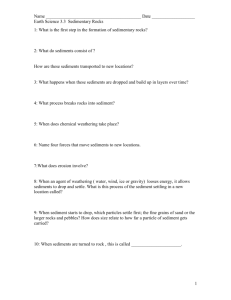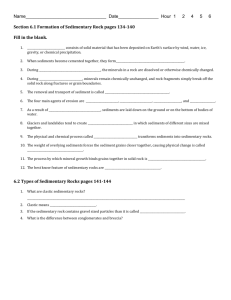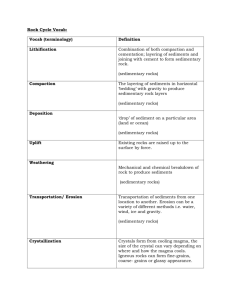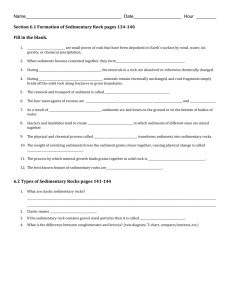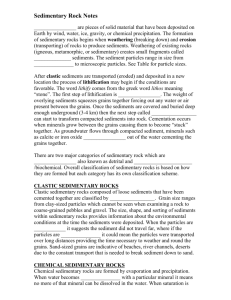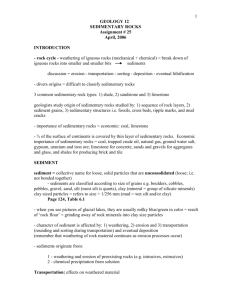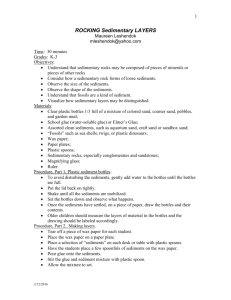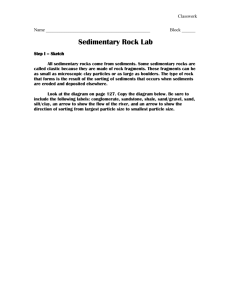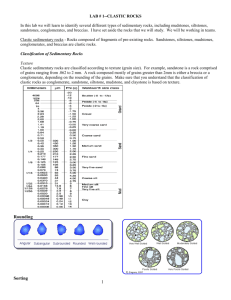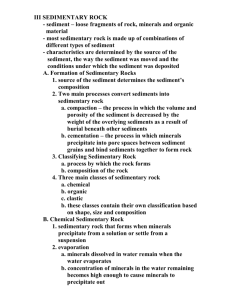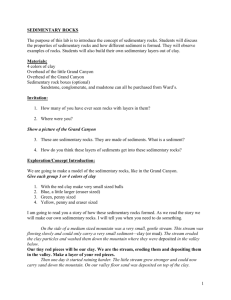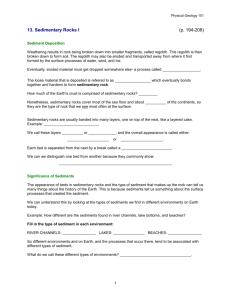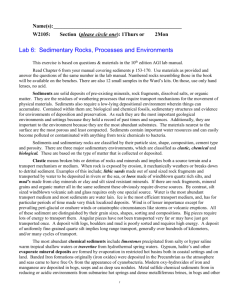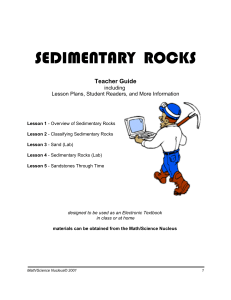Formation of Sedimentary Rocks - weathering produces sediments
advertisement
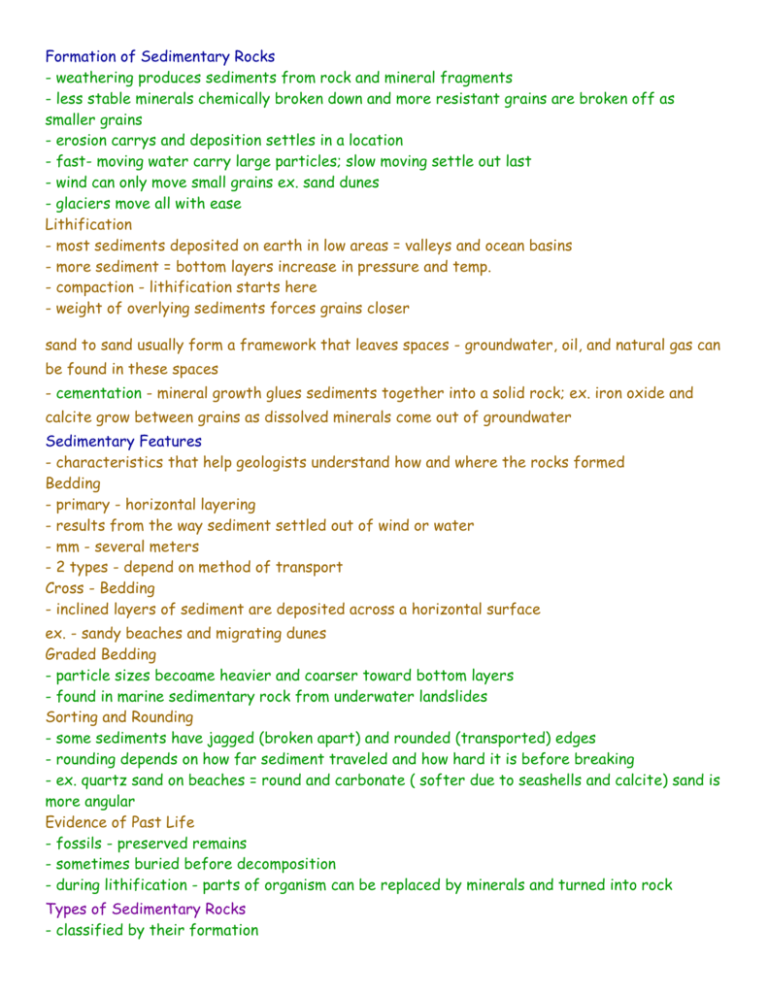
Formation of Sedimentary Rocks - weathering produces sediments from rock and mineral fragments - less stable minerals chemically broken down and more resistant grains are broken off as smaller grains - erosion carrys and deposition settles in a location - fast- moving water carry large particles; slow moving settle out last - wind can only move small grains ex. sand dunes - glaciers move all with ease Lithification - most sediments deposited on earth in low areas = valleys and ocean basins - more sediment = bottom layers increase in pressure and temp. - compaction - lithification starts here - weight of overlying sediments forces grains closer sand to sand usually form a framework that leaves spaces - groundwater, oil, and natural gas can be found in these spaces - cementation - mineral growth glues sediments together into a solid rock; ex. iron oxide and calcite grow between grains as dissolved minerals come out of groundwater Sedimentary Features - characteristics that help geologists understand how and where the rocks formed Bedding - primary - horizontal layering - results from the way sediment settled out of wind or water - mm - several meters - 2 types - depend on method of transport Cross - Bedding - inclined layers of sediment are deposited across a horizontal surface ex. - sandy beaches and migrating dunes Graded Bedding - particle sizes becoame heavier and coarser toward bottom layers - found in marine sedimentary rock from underwater landslides Sorting and Rounding - some sediments have jagged (broken apart) and rounded (transported) edges - rounding depends on how far sediment traveled and how hard it is before breaking - ex. quartz sand on beaches = round and carbonate ( softer due to seashells and calcite) sand is more angular Evidence of Past Life - fossils - preserved remains - sometimes buried before decomposition - during lithification - parts of organism can be replaced by minerals and turned into rock Types of Sedimentary Rocks - classified by their formation - clastic (broken) sedimentary rocks - most common; formed from loose sediments that build-up on earth's surface - further classification based on particles size and mineral content Coarse-grained rocks - gravel- sized rocks and mineral fragments - ex. Conglomerates have gravel-sized, rounded particles - transported in high energy flows of water - Breccias - angular, gravel sized - no time to round; transported across short distances and deposited close to source Medium-grained rocks - sand-sized and mineral fragments - sandstone - high porosity (% of open spaces between grains) - loose sand up to 40%; fluids are able to move through Fine-grained rocks - silt and clay sized particles - ex. siltstone and shale - found in swamps and ponds; slow moving water - settle to bottom - build up in horizontal layers - low porosity - forms barriers Chemical Sedimentary Rock - evaporites - layers of rock as a result of high concentration of dissolved minerals that precipitate out of solution and settle to bottom - form in arid areasdue to low water flow Biochemical Sedimentary Rock - formed from remains of once living things - ex. limestone (shallow water) composed of Calcite - shells settle to bottom of ocean and form thick layers of carbonate sediment



